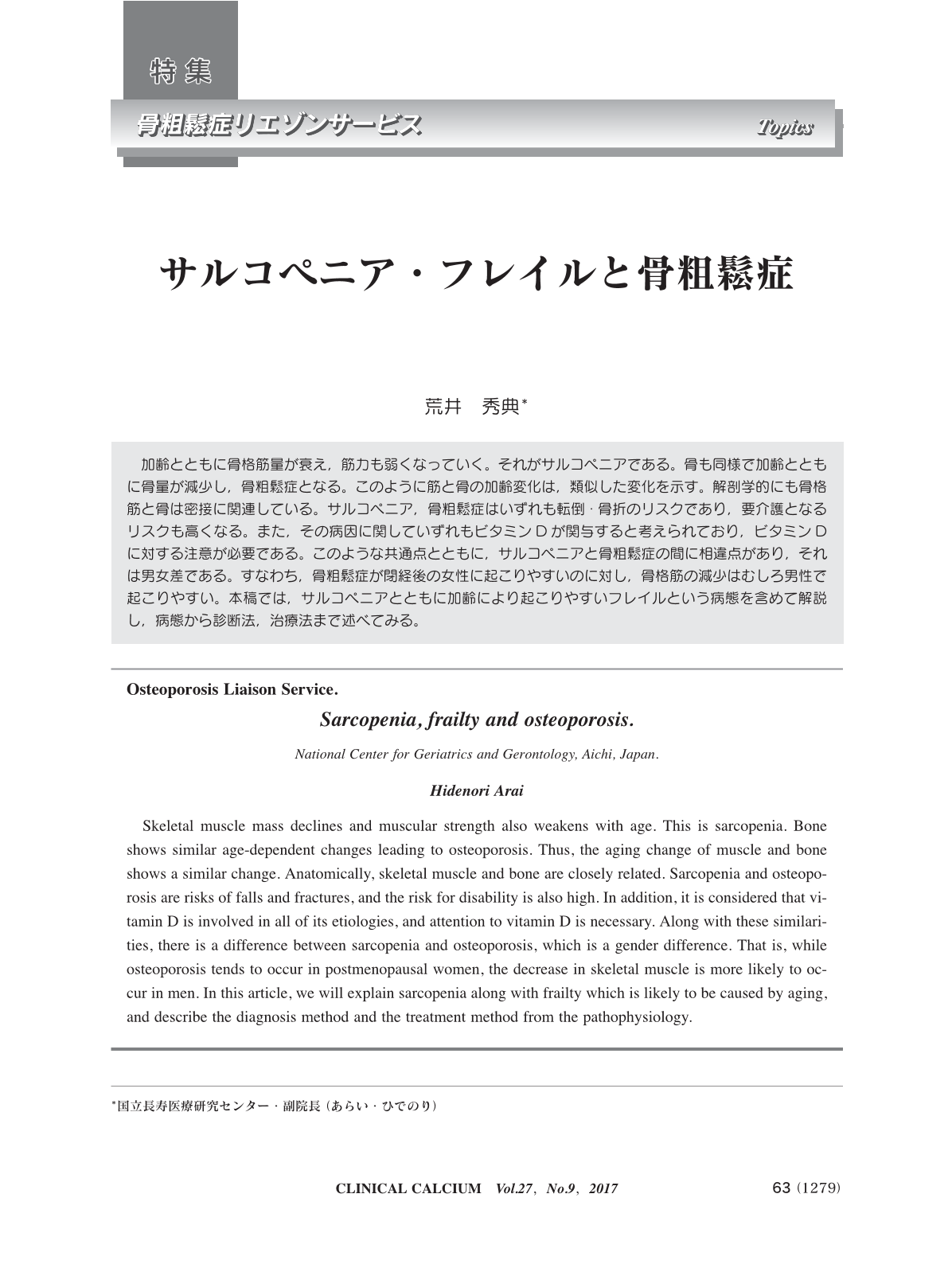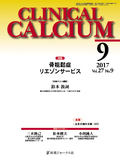Japanese
English
- 有料閲覧
- Abstract 文献概要
- 1ページ目 Look Inside
- 参考文献 Reference
加齢とともに骨格筋量が衰え,筋力も弱くなっていく。それがサルコペニアである。骨も同様で加齢とともに骨量が減少し,骨粗鬆症となる。このように筋と骨の加齢変化は,類似した変化を示す。解剖学的にも骨格筋と骨は密接に関連している。サルコペニア,骨粗鬆症はいずれも転倒・骨折のリスクであり,要介護となるリスクも高くなる。また,その病因に関していずれもビタミンDが関与すると考えられており,ビタミンDに対する注意が必要である。このような共通点とともに,サルコペニアと骨粗鬆症の間に相違点があり,それは男女差である。すなわち,骨粗鬆症が閉経後の女性に起こりやすいのに対し,骨格筋の減少はむしろ男性で起こりやすい。本稿では,サルコペニアとともに加齢により起こりやすいフレイルという病態を含めて解説し,病態から診断法,治療法まで述べてみる。
Skeletal muscle mass declines and muscular strength also weakens with age. This is sarcopenia. Bone shows similar age-dependent changes leading to osteoporosis. Thus, the aging change of muscle and bone shows a similar change. Anatomically, skeletal muscle and bone are closely related. Sarcopenia and osteoporosis are risks of falls and fractures, and the risk for disability is also high. In addition, it is considered that vitamin D is involved in all of its etiologies, and attention to vitamin D is necessary. Along with these similarities, there is a difference between sarcopenia and osteoporosis, which is a gender difference. That is, while osteoporosis tends to occur in postmenopausal women, the decrease in skeletal muscle is more likely to occur in men. In this article, we will explain sarcopenia along with frailty which is likely to be caused by aging, and describe the diagnosis method and the treatment method from the pathophysiology.



